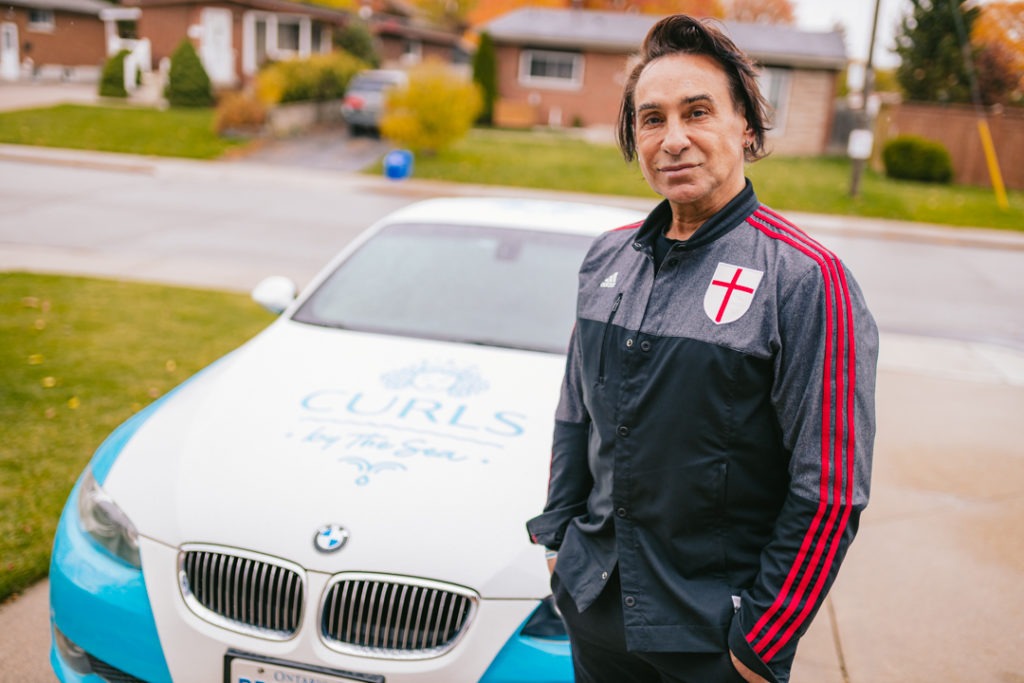
Saved by a hair’s breadth thanks to ECMO
Hamilton Health Sciences (HHS) patient David De Giuli would almost certainly have died from heart failure if not for the hospital’s new, life-saving Extracorporeal Membrane Oxygenation (ECMO) Program introduced earlier this year.
ECMO is an artificial heart-lung bypass machine that is reserved as a last-resort treatment for some of the sickest patients in severe cardiac or respiratory failure. Despite all other life support treatments, their heart and lungs are unable to sustain life, and death is very likely.
“It’s important to remember that these patents are very, very sick and without ECMO the mortality rate is almost 100 per cent.”

Dr. Andre Lamy is surgical director of the HHS ECMO program and Dr. Faizan Amin is the medical director.
“ECMO is a complex intervention that can be life-saving for some patients who need cardiac support after a heart attack or cardiac surgery,” says Dr. Andre Lamy, a cardiac surgeon at HHS’ Hamilton General Hospital and Surgical Director of the HHS ECMO program. “For people with respiratory failure, including those with COVID-19, ECMO can buy time to allow all the other therapies to work and the lungs to heal.”
The survival rate for patients who undergo ECMO treatment is roughly 50 per cent.
“It’s important to remember that these patents are very, very sick, and without ECMO the mortality rate is almost 100 per cent,” says Lamy. “It’s a costly therapy with many risks, but it also saves lives.”
New, lifesaving ECMO program
HHS has two ECMO machines, thanks to support from the Hamilton Health Sciences Foundation, and there are plans for an additional two.
“ECMO has existed for about 20 years, and it has been more frequently adopted in Canada over the last three to five years,” says Lamy, who is thrilled that HHS now has its own program serving patients across the region.
“Having ECMO in Hamilton is going to help to save more lives.”
The ECMO machine takes over the work of the heart and lungs, adding oxygen to the blood, pumping it through the body, and compensating for heart or lung failure by providing oxygenation. It’s connected to a patient through tubes placed in large veins and arteries in the legs. Patients are supported by the ECMO machine for hours, days or weeks depending on their needs.
The HHS physician leads included Dr. Lamy and Medical Director Dr. Faizan Amin, but the ECMO program involves a large collaboration between cardiac surgeons, cardiologists, intensivists, anesthesiologists, services of benign hematology and thrombosis, perfusionists, nurses, respiratory therapists and administrators.
Saved by ECMO
De Giuli was caught completely off guard by a serious heart condition.
“Back in the spring my gym had closed because of COVID-19 so I started looking for other ways to exercise like going for walks or riding my bike,” said the Hamilton businessman who was in the midst of launching a new line of hair care products when he became ill. “I noticed that my stamina was getting worse and worse, and I was experiencing shortness of breath.”
Doctors diagnosed De Giuli with pericarditis, an inflammation of the fibrous sac surrounding the heart, and scheduled him for surgery. His condition continued to deteriorate and he was placed in Hamilton General Hospital’s ICU unit.
“Before I could have the surgery, my heart gave out,” says De Giuli, one of the first patients to receive ECMO treatment. “I’m back home and still recovering, but I feel really great.”
Prior to HHS launching its ECMO program, patients had to be transferred to receive this treatment in Toronto.
“Having ECMO in Hamilton is going to help to save more lives,” says Lamy. “This is great news for HHS and for patients across the region served by our hospital system.”
